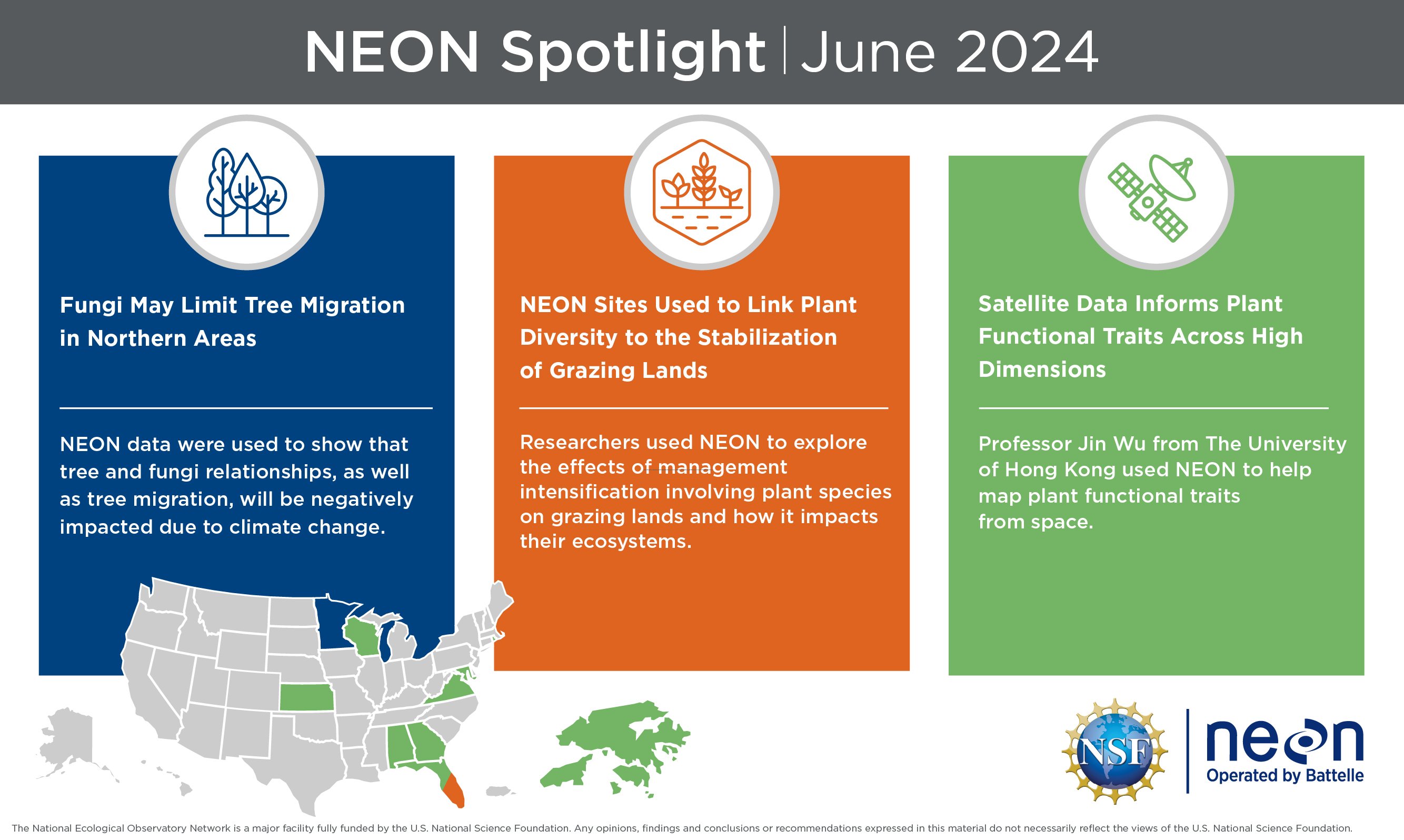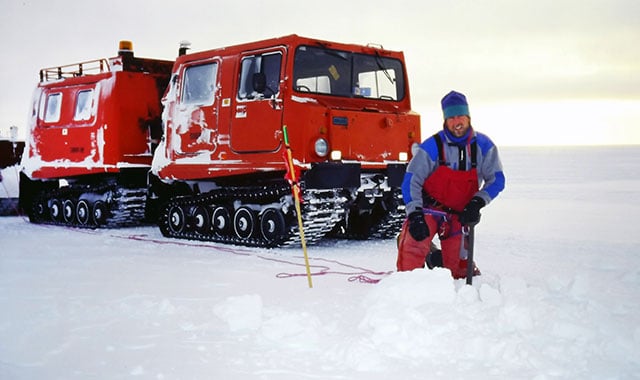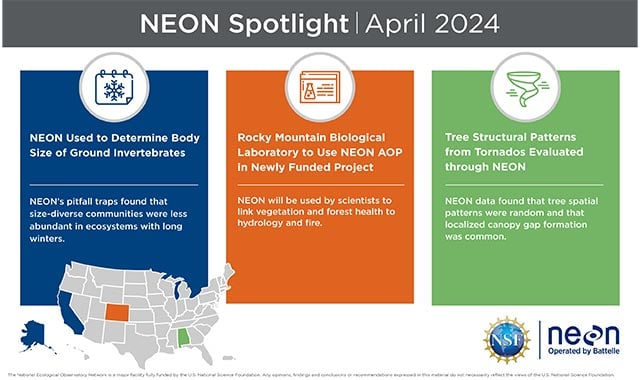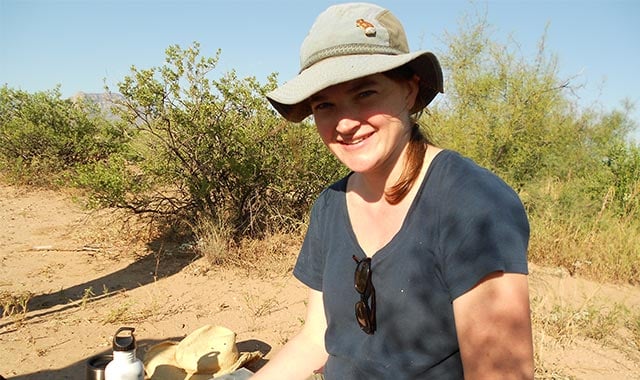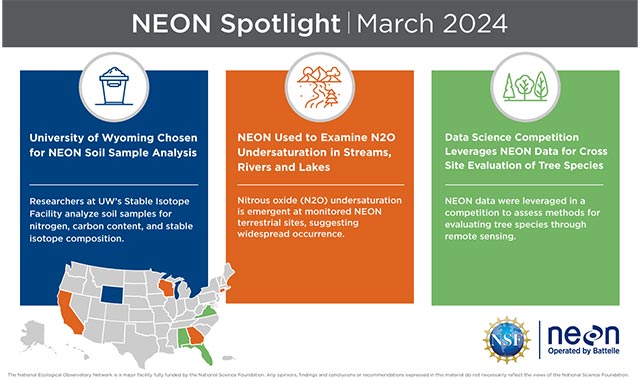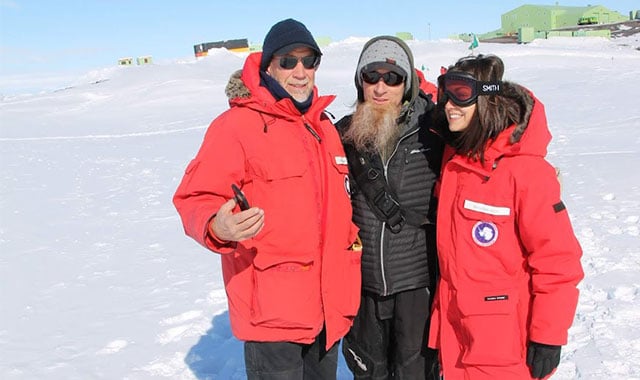January 2022: What’s New with NEON?
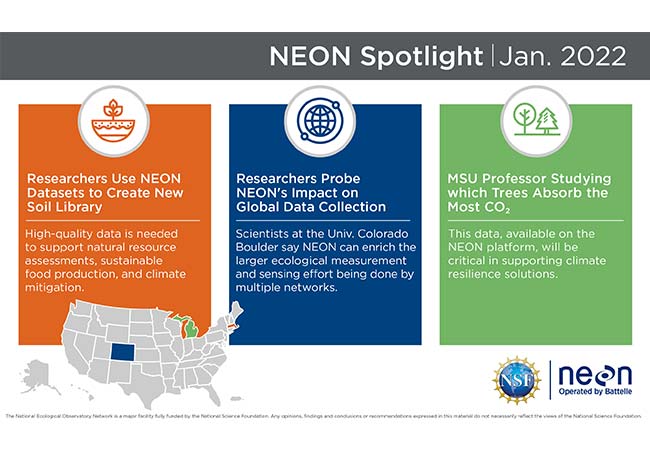
We’re kicking off 2022 with our January edition, highlighting the multitude of ways NEON data is pushing the boundaries of current ecological research. This month’s collection of scientific advances includes an exploration of how unique tree species absorb different quantities of carbon dioxide, a detailed discussion on how NEON data will help advance ecology over the next decade, and an open source and open data project that relies on NEON data to meet the high demand for thorough soil analyses.
This Month’s Spotlight
The latest news from NEON includes:
- Kyla Dahlin, a professor in Michigan State University's Department of Geography, Environment, and Spatial Sciences, is studying how various tree species take up different amounts of carbon dioxide. The National Science Foundation awarded her more than $1 million for the five-year study. The study leverages an airborne remote sensing system with tools that can measure tree height and leaf chemistry, and the data is published in NEON’s database. “If we are able to apply [this technology] across the entire world with some of these satellites that may launch in the next five to 10 years, then we will surely be able to see forests in a way that we have never been able to see them before,” said Dahlin.
- Recently published research synthesizes early directions in the community’s use of NEON data since it became fully operational in May 2019, as well as opportunities for the next 10 years of NEON operations in emerging science themes, open science best practices, education and training, and community building. This includes key questions that the ecology community will address with NEON data in the next 10 years—from understanding drivers of biodiversity across spatial and temporal scales to defining complex feedback mechanisms in human–environmental systems—and the essential elements needed to engage and support a diverse and inclusive NEON user community.
- The need for high-quality soil data has grown exponentially to support natural resource assessments, sustainable food production, and climate mitigation goals. Soil scientists have struggled to keep up with demand due to rudimentary soil measurement techniques still widely used, like benchtop analytical methods. Reflectance spectroscopy—the measurement of light absorption at different wavelengths—has emerged as a rapid and affordable addition to traditional wet chemical analyses. For widespread adoption of soil spectroscopy to become possible, large reference training datasets and complex data analyses are essential. To bridge this gap and enable hundreds of research soil and agronomy groups to collect more affordable soil data, Soil Spectroscopy for the Greater Good has created an open source and open data project that incorporates dataset from a number of contributors, including NEON.
Sponsored by the National Science Foundation (NSF) and operated by Battelle, NEON is a continental-scale ecological observatory network dedicated to providing high-quality, consistently generated, standardized data that is free and available to all users. By enabling scientists, researchers, and students to address critical questions and understand ecosystem changes over time, the NEON program allows the ecological community to tackle questions and problems at a scale that was not possible before.
You can read about the latest work and research in the NEON Spotlight every month at Inside Battelle, and on our social media channels. For more information about NEON, visit NEONscience.org.
Related Blogs
BATTELLE UPDATES
Receive updates from Battelle for an all-access pass to the incredible work of Battelle researchers.
